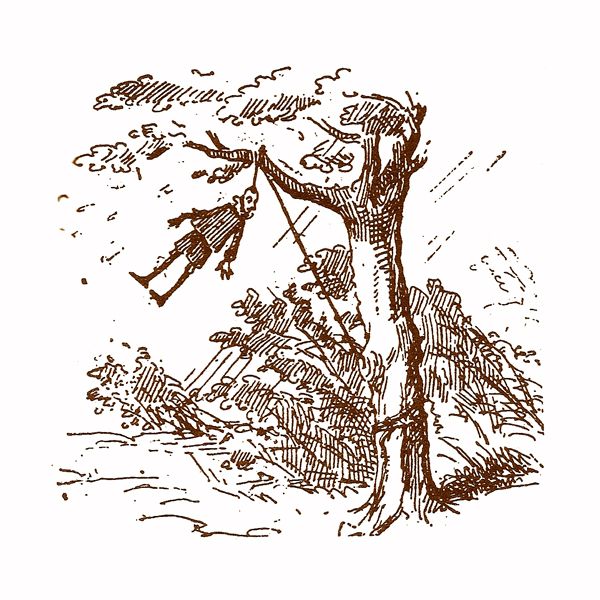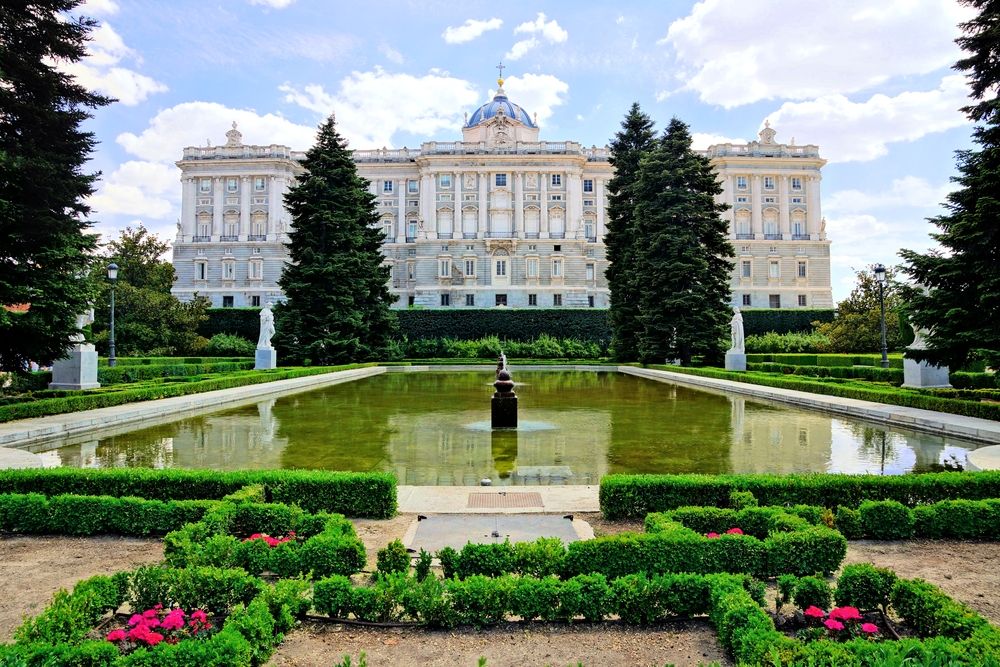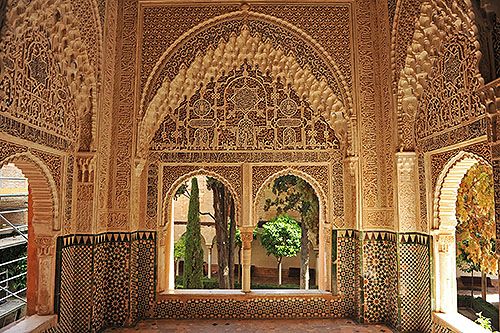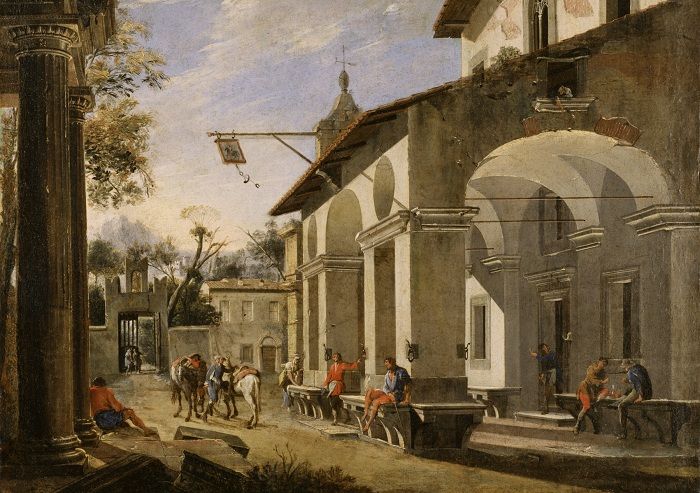Expressions That Are a Mouthful | donQuijote

On the basis of our weekly endeavor to find Spanish phrases that incorporate parts of the body, like the neck and fingers, this week we will talk about phrases that use the word mouth. There is a vast abundance of Spanish sayings that use this word, thus allowing us to do something a little different this time around in hopes of helping you memorize them. Today we’re going to tell you a story.
Continue reading this little story that we have written for you in English and try to guess what the meaning of each Spanish expression is, based on context, or click here to go to the Spanish version. Okay now, pay close attention!
Once upon a time there was a clown who worked in a traveling circus. Each afternoon, before going on stage, the clown would paint a giant smile on his face to entertain the children who came to watch. Thanks to the boca a boca (mouth to mouth), there wasn’t a single child in the whole nation who hadn’t heard of the Jumper the Clown, and they were all dying to see him peform.
One special summer afternoon, a boy named Carlitos stood right in front of the circus with his friends, waiting for the show that was supposed to start at 6 o’clock sharp. But since el que tiene boca se equivoca (he who has a mouth makes mistakes), he told them the wrong time and they missed the beginning of the show.
Despite everything, when they finally took their seats and watched Jumper with his huge painted smile, they were left con la boca abierta (with their mouths wide open). The show ended up going a pedir de boca (to ask by mouth) and they went home already wanting to go back and watch it again.
Por la boca muere el pez (the fish dies through its mouth) and Carlitos asked his friends to go back with him to watch Jumper's show without considering that he no longer had any money to buy tickets. Realizing this, Carlitos was saddened, and in seeing how much the young boy wanted to return, his grandfather gave him enough to buy another ticket.
That day, Carlitos learned a great lesson, that en boca cerrada no entran moscas (flies can’t go into a closed mouth).

So, what do you think? Were you able to capture the meaning of each expression? Some are a little harder than others, so below we have provided meanings for each phrase:
Boca a boca: transferring of specific information from one person to another (word of mouth)
El que tiene boca se equivoca: everyone makes mistakes
Con la boca abierta: in a state of wonder (with mouth agape)
A pedir de boca: to go according to plan
Por la boca muere el pez: saying things without thinking them through
En boca cerrada no entran moscas: sometimes it's best to keep your mouth shut
We hope that you have learned some Spanish expressions using boca after having read Jumper's story. To learn more phrases pertaining to other parts of the body, we recommend that you check out our YouTube channel, where you’ll find videos like this one:
5 Must-Bookmark Websites to Learn Spanish | donQuijote

Happy Internet Day! The invention of the World Wide Web has been one of the biggest game changers in human history, radically reshaping almost every aspect of our lives.
For all its faults, the internet has flung open the door to a seemingly infinite (and ever-growing) world of educational tools. Today, we’ll take a look at our top 5 resources for online Spanish learning. Click here to read this post in Spanish.
-
The Royal Spanish Academy
How many times have you looked up a word and found that one dictionary says one thing and another dictionary says another? Have you ever googled a grammar question and agonized over which style guide to follow? (Chicago, AP, MLA, Oxford… so many choices!)
In Spanish, this problem disappears: there is one authoritative body to rule them all! The Real Académia Española (RAE) can give you definitive answers to all your Spanish questions. Check out their website at www.rae.es or go directly to the Diccionario de la lengua española. The dictionary is very thorough: you look up a verb, you can see all the ways to conjugate it.

-
Fundéu
Fundéu is another official resource that works hand in hand with the RAE. Languages evolve quickly, and Fundéu is the RAE’s way to answer language and usage questions as they emerge in real time. One of the hot issues in the last couple of years has been gender-inclusive and gender-neutral language. As you can imagine, this is a particularly difficult subject to navigate in Spanish, where all nouns have a gender and the masculine form is traditionally used when referring to groups of both males and females.
-
YouTube
This popular video-sharing website is a treasure chest full of Spanish language and cultural gems! You can find dynamic Spanish lessons, watch top YouTubers from different Spanish-speaking countries, learn how to make traditional foods as you follow recipes in Spanish, or listen to songs in Spanish with the lyrics and sing along. This is a fun way to work on your listening skills, learn about different cultures, and improve your pronunciation!
If you’re not quite sure what you’re in the mood for, just type a word in Spanish in the search bar and prepare to be entertained!
-
Spanish language newspapers
See the world from a different point of view! Search for periódico + country name to find newspapers from different Spanish-speaking countries. (In Spain, the most-read newspaper is El País.) Reading foreign newspapers in Spanish will not only help you improve your language skills and teach you new vocabulary, it will also give you a more international perspective on global issues and events.

-
Sample DELE Exams
Earning a DELE diploma is one of the best ways to officially certify your Spanish level. But even if you’re not planning on taking the exam any time soon, going over practice tests can help you round out your Spanish skills and discover your strengths and weaknesses. Visit www.dele.org and click on each of the levels to find a full practice exam (with answer key).

There’s a lot the digital world can offer us, but some things never change. The best way to learn Spanish is to travel to a country where it is spoken, take a course, and talk to people. When you learn with don Quijote, you’ll be immersed in Spanish day in and day out, polishing your language skills and putting them to use in the real world. Until then, take full advantage of the virtual tools at your fingertips!
Spanish expression: Water Up to Your Neck

Giraffes, swans, ostriches, and flamingoes… Do you know what these animals have in common? Each has an exceptionally long neck. An adult giraffe’s neck, for example, can come to measure up to 6.5 feet. And necks are precisely our topic of choice for the day.
Similarly to many other parts of the body, the neck has been a great inspiration for many sayings in Spanish. Today we will unfold the meaning of one specifically: estar con el agua al cuello... This would literally translate to being in water up to your neck. Click here if you would like to learn more in Spanish. Let’s go!
Estar Con el Agua al Cuello
In Spanish, this is a common phrase used to describe situations in which we find ourselves in a hurry or faced with a problem, one could say we are con el agua hasta el cuello. Here´s an example:
Martina está con el agua al cuello: debe dos meses de alquiler y se ha quedado en la calle.
In this example we can see how Martina might be going through a hard time. She lost her job and on top that, owes two months‘ worth of rent.
Cinematic Imagery
When considering the origin of this saying, surely many cinematic scenes must come to mind. This is because oh so often we find this exact scenario in many Hollywood films, where someone is about drown with water rising as it begins to creep up their neck.

Can you recall that nerve-wracking scene in Titanic where Leonardo DiCaprio finds himself handcuffed to a pole? Water levels rise as the ship continues to sink, and with every second that goes by, Jack comes closer and closer to drowning. Finally, Rose takes an axe and frees him from an almost inevitably horrific death. Thus we see how the protagonist was con el agua al cuello.
Other Similar Expressions
Another variation of this phrase is estar hasta el cuello. Wherein, whether it be in water or something else, we feel submerged up to our heads. This, as you can imagine, is all but relaxing.
Another expression that is very similar is estar con la soga al cuello. This phrase evokes the moment before an execution, where the guilty person finds themselves on the gallows on the brink of being hung. Undoubtedly, a very uneasy scenario that would evoke the same tension as the previous phrase.

If you've enjoyed discovering the meanings of this expression, we invite you to see the following video. In it you will find many other expressions that entail parts of the body such as the fingers or elbows. We hope you like it!
All You Need to Know About Eurovision 2019 | donQuijote

Countries across Europe are revving up for their beloved yearly singing competition, the Eurovision Song Contest. What began in 1956 as a way to bring Europeans together after World War II is now a long-standing international tradition full of sparkle and fanfare. As per the official rules, politics are left at the door so everyone can fully enjoy this must-see television event.

This year, why not join them? No matter where you are in the world, you can stream the live performances on the official Eurovision website. In today’s post we’ll help you brush up on the basics to get you ready to organize your watch party next week. We hope you’ll be rooting for Spain! Click here to read this post in Spanish and get in the mood.
Who is participating?
This time around, 42 countries are participating in the Eurovision Song Contest. That’s right, this competition goes way beyond the 28 members of the European Union… countries as far-flung as Russia, Iceland, Morocco, and Israel have been welcomed into the Eurovision gang at one time or another. And if you think that’s surprising, you might just lose your mind when you hear that Australia has participated in Eurovision four times. But hey, the more the merrier!

How does it work?
By mid-March, each participating country has to submit a performer (up to 6 people) and an original song (3 minutes or less). Each country has its own system, but usually TV viewers in each country get to vote for who will represent them.
The anticipation builds for over a month before the first live competitions begin in May. This year, more than a dozen countries will be eliminated during the Semi-Finals on May 14 and 16, leaving only 26 countries for the Grand Final on May 18.
We already know six countries who will make it to the Grand Final: the “Big Five” (France, Germany, Italy, Spain, and the UK, who qualify automatically every year) and the host country, Israel. Eurovision is always hosted by the country who won the competition the year before.
What happens at the Grand Final?
Each of the 26 acts gives a spectacular live singing performance (live instruments are not allowed). Once everyone has had their time on stage, the voting begins. Each country can award two sets of 1 to 8, 10, and 12 points. One set is determined by a 5-person jury of music industry professionals, while the other set is decided by viewers at home, who can vote by phone, text, or the official app. You cannot vote for your own country.
Tensions mount as each country announces how they will be awarding their points with a live broadcast from an emblematic location (such as the Royal Place in Madrid).

Hearts beat faster and faster as more and more countries’ votes are tallied until the winner becomes clear. The spectators rooting for the winning country jump up and down in ecstasy while the rest Europe breathes a collective sigh of disappointment. The winning act takes a victory lap, performing the winning song all over again before returning home with fame, glory, and the iconic glass microphone trophy.
Spain’s contestant
Spain hasn’t won Eurovision in 50 years, so we’re ripe for a win. Miki, this year’s winner of Spain’s televised singing contest Operación Triunfo will be singing La Venda (The Blindfold), a song was written by Adrià Salas, the lead singer of La Pegatina. The Latin Grammy-nominated band’s songbook includes tunes in several Spanish languages, including Catalan and Galician, but La Venda is sung in Castilian Spanish. Why not learn the words so you can sing along?
Mark your calendar
Now you know the ground rules, but there’s really only one way to truly experience Eurovision, and that’s by watching it! You’ll be glued to the screen as you see some of the world’s craziest outfits, wildest dance moves, and all out fabulous performances.

It’ll give you something to talk to your European friends about — it’s not an official holiday here, but it might as well be!
Five Fingers Say It All | donQuijote

Like so many other parts of the body, fingers (dedos) are the starting point for lots of popular expressions in Spanish. In today’s post, we’re going to learn two of them: quedar como anillo al dedo and estar para chuparse los dedos. Can you guess what these sayings mean?
If so, congratulations! If you have no idea, don’t worry. Stick around and improve your vocabulary by finding out all about them. To read this post in Spanish, click here.
Quedar como anillo al dedo
Do you remember the story of Cinderella? Today’s first expression has a lot to do with one its most famous scenes.

When the clock strikes midnight, Cinderella is running from the royal ball where she and the prince have just fallen in love. The magic spell that made it possible for her to go to the ball is about to wear off, and as she flees, she loses one of her beautiful glass slippers.
The next day, the prince finds the slipper and decides to ask all the young women in the kingdom to try it on. The slipper will only fit the foot of the woman he loves, the future princess. Everyone tries on the glass slipper, but Cinderella is the only one whose foot it fits. It fits her like a ring on a finger, como anillo al dedo. Thanks to the perfect fit, the prince finds the woman of his dreams and together they write their love story.
Venir como anillo al dedo means that something is perfect for the situation at hand. There are lots of other common expressions that mean the same thing: ir de perlas, venir que ni pintado, and venir a las mil maravillas are just a few. Let’s see some more modern examples:
A Rosa le ha venido como anillo al dedo mudarse a la capital. Estaba muy aburrida en el pueblo.
A Rosa le ha venido a las mil maravillas mudarse a la capital.
A Rosa le ha venido que ni pintado mudarse a la capital.
(Moving to the capital was the best thing Rosa could have done. She was so bored in the small town.)
Estar para chuparse los dedos
Today’s second expression almost needs no explanation. The idea of someone sucking their fingers after a meal is universal. When we finish eating something truly delicious, it’s hard not to chuparse los dedos to make the flavor last as long as possible. As we say in English, it’s finger-licking good!

Another expression used to describe exquisite flavors is hacerse la boca agua (mouthwatering). Take a look at the following examples:
Todo lo que había en el banquete de la boda estaba para chuparse los dedos.
Se me hacía la boca agua con todo lo que había en el banquete.
(All the food at the wedding was finger-licking good.
All the food made my mouth water.)
If you found these expressions interesting, you’ll love this video. Watch to learn lots more expressions with parts of the body, like elbows and necks. Enjoy!
Spanish Words with Arabic Origins | donQuijote

Although Catholicism is the most popular religion in Spain today, it wasn’t always that way. In fact, the Moors (a term used to describe the Muslim Arab and Berber conquerors of Spain) ruled parts of the Iberian Peninsula for almost 800 years. As a result, the Moorish influences in Spain are multifold and can be seen in customs, food, art, science, culture, and, of course, the Spanish language.

To celebrate this special time of the year, let’s have a look at the impact that Arabic, one of the languages spoken by the Moors, has had on Spanish. Click here to read this post in Spanish.
Here are just a few of the thousands of Spanish words with Arabic origins. Keep in mind that these words came from the Arabic spoken in Al-Andalus hundreds of years ago. An, Arabic, like all languages, has continued to evolve and change.
Andalusian Arabic Spanish English
aṭ-ṭūb adobe adobe
al-ḥabqa albahaca basil
al-bunduqa albóndiga meatball
al-jumra alfombra rug
al-ŷabr álgebra algebra
al-mujjadda almohada pillow
as-sukkar azúcar sugar
ar-ruzz arroz rice
bādinyana berenjena eggplant/aubergine
kitār guitarra guitar
laymūn limón lemon
nārinŷa naranja orange
law ša'a allah ojalá hopefully
ŷarra jarra pitcher
isfinnāriyya zanahoria carrot
Thanks to Arabic, many of these concepts have been included in the Spanish language and continue to be used today. Do you know of any other word that does not appear in this list?
Cat or Hare? Spanish expression | donQuijote

When learning a new language, there’s only one thing more fun than picking up common Spanish language sayings: discovering their origin. Many times, the backstory is even more surprising than the sayings themselves. Click here to read the Spanish version of this post.
Continuing with our series of common Spanish expressions with cats, this week we have a couple of sayings with surprising origins. Take out your pen and paper: when you travel to Spain or Latin America you’re sure to hear these phrases more than once.
Dar gato por liebre

This expression, to give a cat for a hare, is used when you pass something off as something more valuable. It’s usually used when somebody has fallen victim to a scam or deceit upon purchasing a product or service.
The saying first came about many years ago, between the 16th and 17th centuries. At that time, people travelled by foot or on horseback and journeys took a lot longer than they do today. Posadas (inns) were establishments that would provide food and lodging for weary travelers when they stopped along the way.
However, these businesses often took advantage of the customers who were just passing through. One way to do so was to serve them cat meat (cats were street animals) and call it hare (a much more expensive meat). This way, the posadas could save money at the cost of people they would never see again.
This practice was so common at the time that it became popular for travelers to recite a kind of rhyming incantation before meals
Si eres cabrito, mantente frito;
si eres gato, salta al plato.
(If you’re goat meat, stay fried/asleep;
If you’re cat meat, jump on the plate.)
Returning to the present, here’s an example of how this saying might be used today:
La agencia de viajes me dio gato por liebre; pagué por un hotel de cinco estrellas y me enviaron a una pensión malísima.
The travel agency gave me cat for hare; I paid for a 5-star hotel and they sent me to a crummy hostel.
Buscarle tres pies al gato
When we talk about animals in Spanish, it’s correct to use the word patas (paws) instead of pies (feet). However, this expression is an exception.
Buscarle tres pies al gato (to look for three feet on a cat) is to try to explain the unexplainable. You’re probably asking yourself why use this and not another number, since cats actually have more than three paws.
It is thought that this expression has changed over time. At some point, the saying buscarle cinco pies al gato (to look for five feet on the cat) was used to describe something impossible, which makes sense since cats only have four paws.
However, in the times of Quixote, the expression had already evolved into its more modern version. In one of the book’s passages, we find this interesting piece of dialogue:
—Y enderécese ese bacín que trae en la cabeza y no ande buscando tres pies al gato.
—¡Vos sois el gato y el rato y el bellaco! —respondió don Quijote.
(“Put that basin straight that you’ve got on your head, and don’t go looking for three feet on a cat.”
“’Tis you that are the cat, rat, and rascal,” replied Don Quixote.)
If you want to learn more expressions with gato, click to watch the video below.
















 don Quijote is internationally recognized by
don Quijote is internationally recognized by